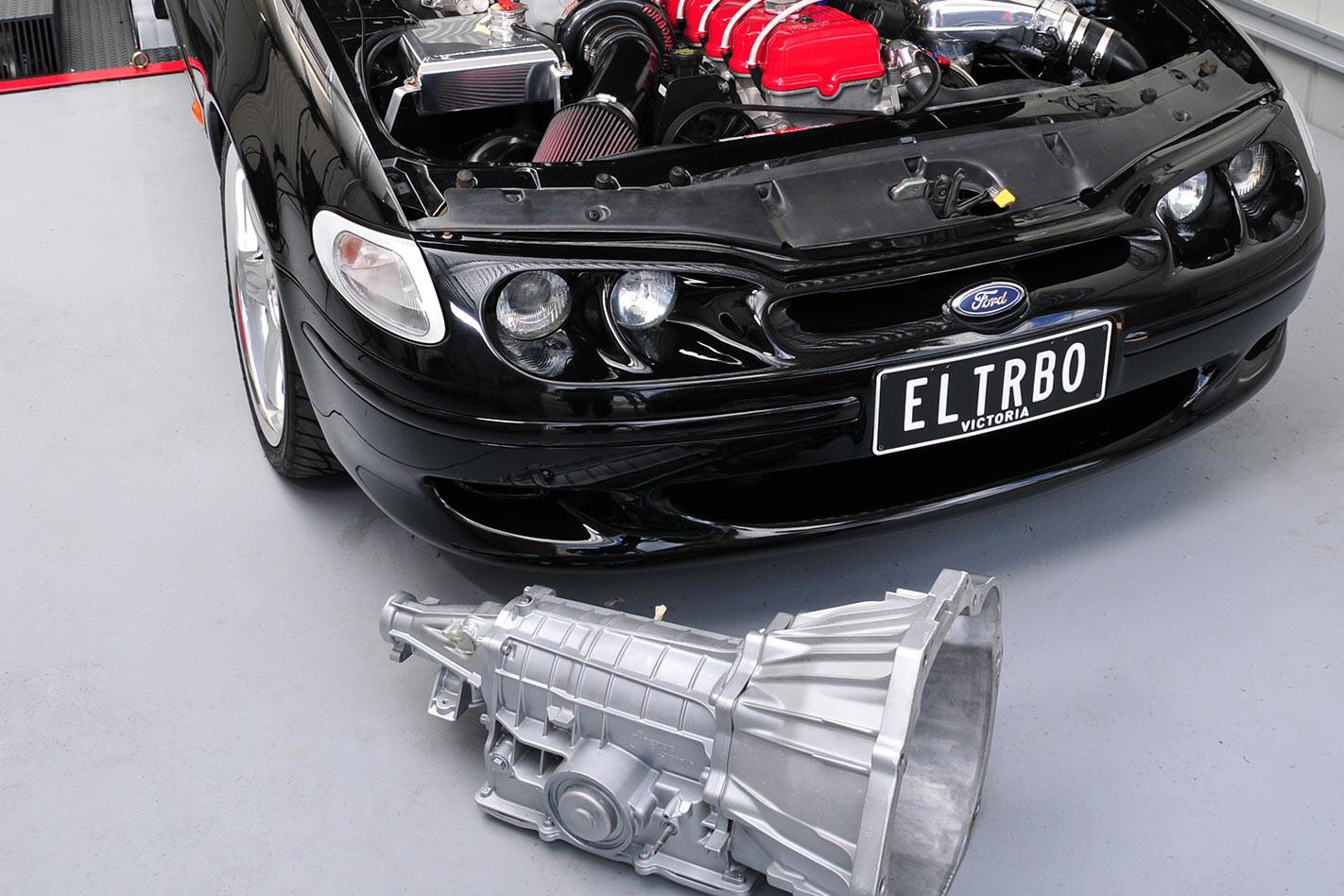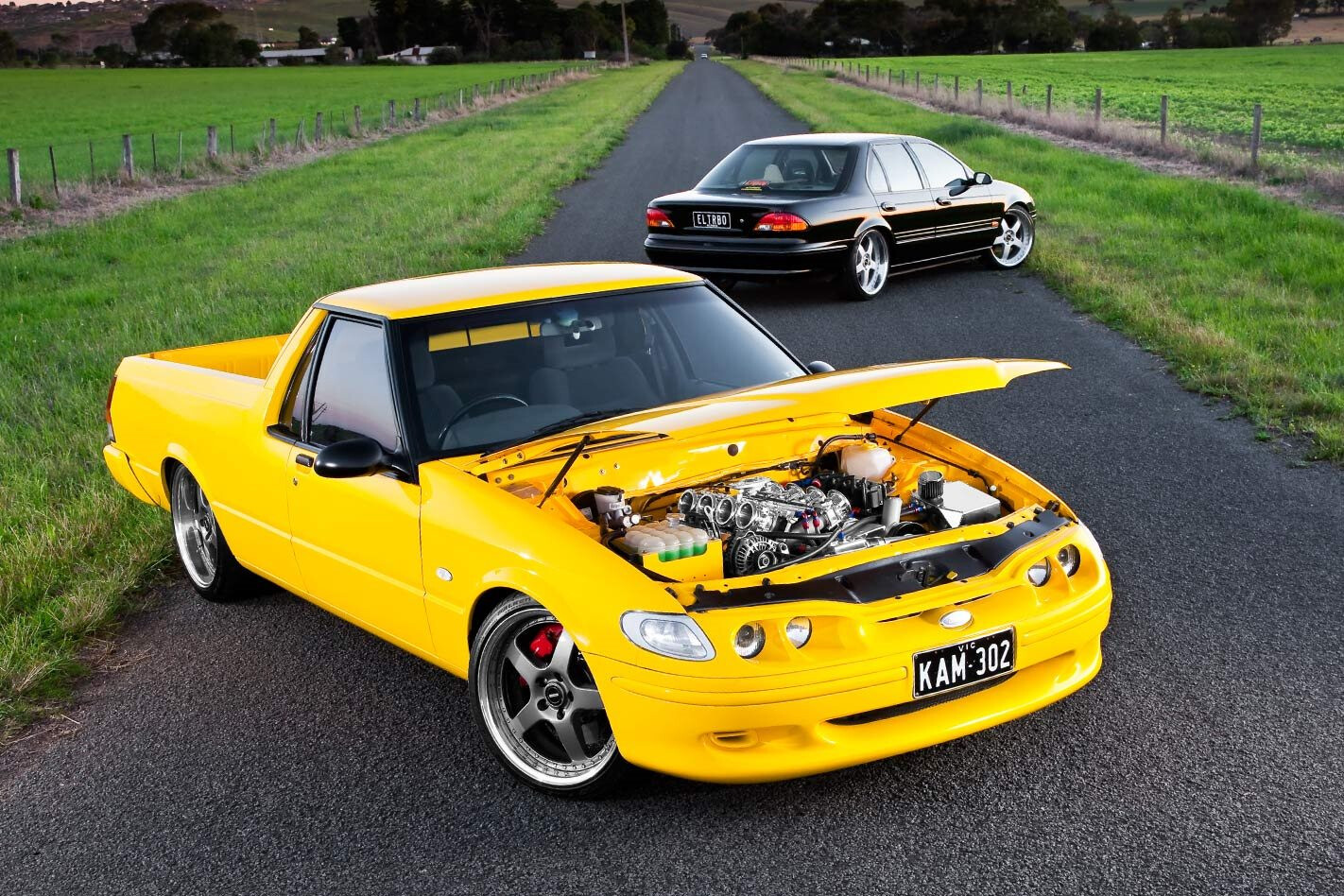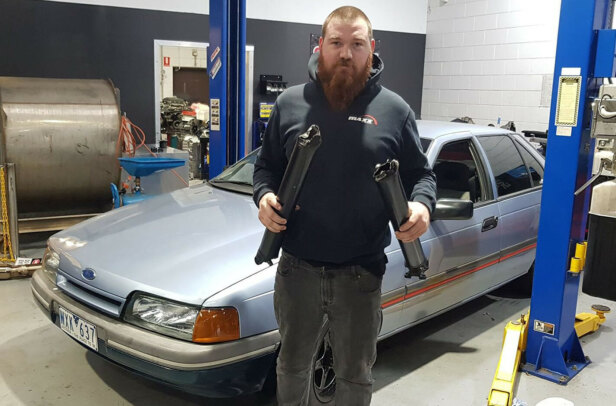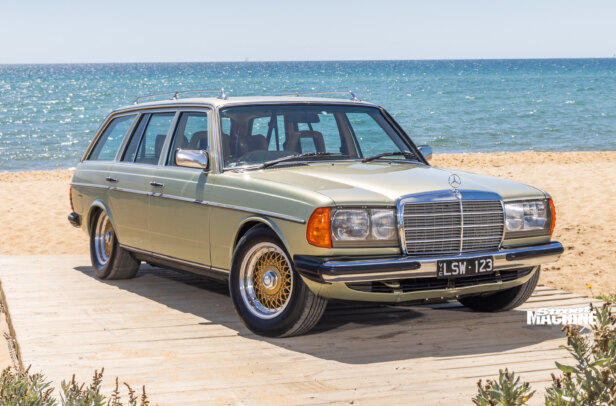THE four-speed BTR auto used in EA to BA Falcons may not be the first ’box that springs to mind when the subject of performance transmissions comes up. However, with carefully selected components and the right programming it can handle plenty of power. As Aaron Madox from DTM Transmissions says: “It’s always been a pretty advanced ’box — it was ahead of its time when it first appeared.”
DTM specialises in building ultra-strong BTRs that can also be ordered with full manual control and transbrake options.
First published in the November 2009 issue of Street Machine. Photos: Paul Tuzson
ELECTRICAL MANIPULATION
AS WITH all electronically controlled automatic transmissions, the BTR still uses hydraulic control and actuation — the sliding valves that distribute hydraulic pressure to operate the clutches and bands that change the gears are still present. However, the supplementary electrical and computer control systems add an extra layer of complexity when it comes to re-engineering this type of ’box. But Aaron says: “It’s the future and opens extra possibilities for controlling the behaviour of the transmission.”
One major difference with this style of transmission is the shift selector. In a traditional auto, operation is wholly determined by the position of the shifter. But while moving the BTR’s shift lever does mechanically alter the positions of valves and pressure-regulating solenoids in the valvebody, the large white selector switch (black on BA) sends differing electrical signals to the management system, which then completes the job of applying or releasing hydraulic pressure to the various sections of the gearbox.
NOT QUITE NORMAL
A MAJOR goal in OEM transmissions is imperceptible shifts, which is achieved via slippage. Unfortunately, such slippage increases wear and heat in the transmission. In one of DTM’s performance builds, it speeds up the shifts for better acceleration — a rare example of a performance modification that can actually increase component life.
WEAK POINT
BTR clutches are quite good but the front band is a weak point. It’s particularly susceptible to heat because it’s so thin. The front band acts on the rotating cast-iron C3 clutch drum (see ‘Who’s on First’, below). Speeding up 2ND to 3RD shifts causes the drum to accelerate faster and calls for a quicker release of the band, otherwise the stresses involved can break the welds holding the coupling plates to the steel backing, leading to catastrophic failure. The severity of engagement is controlled by adjusting the surface area of the front servo piston. Standard pistons can also prove fragile, so DTM manufactures a stronger unit with greater surface area, from billet alloy. Faster shifts help with the heat problem.
On the other hand, the plates in the C1 clutch drum are a strong point. They have more friction area than a C10 and are capable of holding up to 800hp. The key to their holding power is the large clamping force resulting from the large surface area of the factory apply piston.
This is one of the test cars for the full manual transmission, featuring uprated components. It’s driven constantly on weekends
NEED FOR SPEED
DRAG means friction, which increases fuel consumption. To overcome drag, the factory sets the clearances between friction plates quite loose. The downside to increasing clearances is that it increases shift time — painfully slow in BA ’boxes. To offset this, Ford (and other manufacturers) rapidly fills the clutch packs with oil to take up the clearances, then reduces the fill rate to smooth the shift just before the clutches apply.
By adjusting the clutch clearance, valvebody orifice sizing and programming, DTM has sped up the shifts, while retaining smooth gear changes. This reduces shift times from half a second to 0.2sec without consequence. Aaron pulled the front band out of one of his modified test transmissions after some fairly hard work and says it still looked like new.
CHIP ON SHOULDER
THE next weakest point in the transmission is the primary sun gear shaft. This drives all the time in 1ST, 2ND and 3RD. In 1ST and 2ND it drives the whole ’box. From EA to AU these had large teeth that were very strong, if somewhat noisy. To combat the noise, BA onwards versions got smaller teeth, which aren’t as strong and are also susceptible to chipping because the hardening wears away. For a performance ’box, the earlier types are the best. Unfortunately, these early shafts are no longer available new, so you’ll have to seek out a good secondhand unit.
Obviously, the planetaries that mate with the primary sun gear shafts also come in matching coarse and fine-tooth versions. Aaron notes that from BA on, a standard Falcon has fine teeth, except for the XR8 and Turbo, which have the earlier type with the stronger teeth.
Another advantage of the earlier planetary set is that it has oil holes down the centres of the pinions — an advantage in performance applications. It’s rare that anything goes wrong with these earlier types.
Oil is the lifeblood of any auto and the BTRs have employed three different pumps. Up to BA, crescent gear pumps were used. From EA to ED the gears were 25mm wide, which Aaron says was ridiculously oversized and created excessive drag. From EF, 19mm gears were used, which supplied perfectly adequate pressure and volume with much less drag. BA ’boxes employ a narrow gerotor type pump, which only just provides sufficient fluid.
NO SUPPORT
THE centre gear in a crescent gear pump runs on a bush, so it’s well supported. Conversely, the inner rotor in a gerotor pump isn’t supported in the same way; it runs directly on the converter drive collar. Having examined lots of failed ones, Aaron believes that the outer rotor gets stuck in the pump housing while the converter keeps driving the centre rotor, resulting in destruction of the pump. Additionally, the BA pump cover is aluminium so the rotors expand more rapidly and jam in it. For this reason it’s essential to warm up your BA before sinking the boot — punish it when it’s cold, it’ll punish you by breaking.
The earlier pumps also have issues. If the car backfires, the drive tangs can get twisted off, losing all drive. Quality converters employ chrome-moly drive collars which resist this problem. In short, when building a high-performance BTR, use an EF/EL pump with a quality torque converter rather than a later BA type. Note that the earlier pumps fit the later BA pump cover.
PROGRAMMED BEHAVIOUR
DEVELOPING a performance auto transmission is all about altering surface areas and clamping pressures. Upgrading physical components (number of clutch discs, friction face widths, size of hydraulic pistons) is the general method. In electronically controlled ’boxes, additional control can be achieved via the ECU. This can be direct control by means of aftermarket systems (see Full Manual Control), or by manipulating the factory ECU program using software like HP Tuners and SCT.
While the BTR is not known as a high-performance transmission, it is possible to turn one into a very capable piece via a few choice mods and some electronic manipulation. In fact, a couple of years ago there was a single-turbo EA making around 677hp at the flywheel that ran a high nine — the BTR in that car proved up to the task. Aaron’s single-turbo EL is already making similar power and its BTR is also surviving quite nicely. By the time you read this, DTM will have its BTR transbrake ready. So if you’re in the market for a tough BTR auto to go in your Ford, give DTM a call on (03) 5222 1833.
WHO’S ON FIRST?
FOR most of us, the inner workings of an automatic transmission are completely confounding. To put things simply, drive is transferred by clamping and releasing clutch packs and bands. Here’s a simplified description of the BTR’s various packs and bands.
The C1 clutch pack is applied in 3RD and 4TH gears. So when the auto shifts from 2ND to 3RD, that’s when that clutch comes on. The C2 pack (called the forward clutch pack) is applied in 1ST and all other forward gears. It doesn’t actually do anything in 4TH but it’s still applied. The C3 clutch pack is applied only in reverse.
The C4 clutch pack is the smallest in the transmission and provides engine braking in 1ST, 2ND and 3RD. However, it has to be released in 4TH or the whole transmission binds up. The C4 pack is located in the same side of the alloy input clutch drum as the C2 clutch, but further in. The front band is applied to the C3 clutch drum by the front servo in 2ND and 4TH, and hydraulically released in 3RD. Note that in a quick-shifting ’box the drum has to be stopped very quickly. This is why the modified front servo described in the copy is an integral part of the full-manual conversion.
FULL MANUAL CONTROL
OTHER than a couple of minor valvebody mods and an upgraded front servo, converting a BTR to full manual control is done via an aftermarket ECU. In the BTR, it only takes two solenoids to engage all four gears — their operation varies depending on the voltage fed to them. For manual engagement, a customisable table is set up in the management system, which detects the shift lever position (resistors in the switch change its electrical output depending on position) and generates the appropriate signal voltage to activate the relevant solenoids. Even though fine control of the shifts is possible, if you don’t modify or swap certain components to handle the increased stresses created within a manually shifted BTR behind a powerful engine, failure will most certainly ensue.
Virtually all of the latest high-end aftermarket management systems such as those from MoTeC, AEM (Wolf), Autronic, and Pectel can be used to operate the BTR. Aaron likes the MoTeC and uses one his own vehicle. “A manual transmission like this is perfectly usable on the street,” he says. “I drive mine all weekend, every weekend.”
In detail:
1. Although it does control park, reverse, neutral and drive, from 4TH to 2ND the manual valve doesn’t do anything. This is why it can’t be converted to full manual using hydraulics alone
2. In traditional automatic transmissions, moving the shifter changes the position of the main valve, which supplies oil somewhere. Electronics take over this job in late-model transmissions
3. The tan-coloured band is the original type. In BA it was changed to the grey high-energy one shown, which takes more heat, ideal for performance applications. The damaged one (top) is an example of what can happen to these bands
4. The two apply pistons shown are from the Ford/BTR and Powerglide. You can see that the ’Glide has much less area than the Ford C1 clutch pack unit
5. Programs like HP Tuners allow you to manipulate the stock ECU’s programming. Stepping up to full manual control or a transbrake requires ditching the stock ECU and upgrading to a high-end aftermarket ECU
6. Note the oil holes down the centre of the pinions. These have been deleted in later models. The earlier ones are best for performance
7. The factory front servo cover and matching piston (right) compared with the considerably larger DTM version (left). This upgrade is vital when converting the BTR to full manual control
8. EA to ED pump internals are shown at left; EF to AU set in the centre; the BA set is at right. The centre ones are best
9. Earlier clutch plates had cross-cut grooves. Later types had radial grooves and these are the better ones. The plate to the left is out of a Powerglide and is shown for the sake of comparison
10. The teeth on the earlier primary sun gear shaft at right are bigger and stronger. Note, though, the shorter teeth on the six-cylinder reaction gear (fitted over the primary sun gear shaft)
11. These planetaries even went into Maseratis some years ago. They were originally designed for about 8000rpm. Aaron says he’s tested them to that speed without failure
12. The gear selector switch is where the action is. Moisture can get trapped behind it and corrode the flats on the shaft in early models. When this happens, you can’t shift!
13. Reaction or reverse sun gear. This primarily drives reverse and is held stationary in 2ND. The eight-cylinder version has longer teeth and is better suited to high performance
14. The intermediate driveshaft comes on and applies in 3RD gear. If the transmission isn’t set up correctly it can break just in front of the last sealing ring. It drives everything in 4TH gear
15. Some bushes don’t wear that much but the C3 clutch drum does. Pump bushes can also wear. The one at the back of the output shaft is nearly always worn out, along with the one in the extension housing




Comments